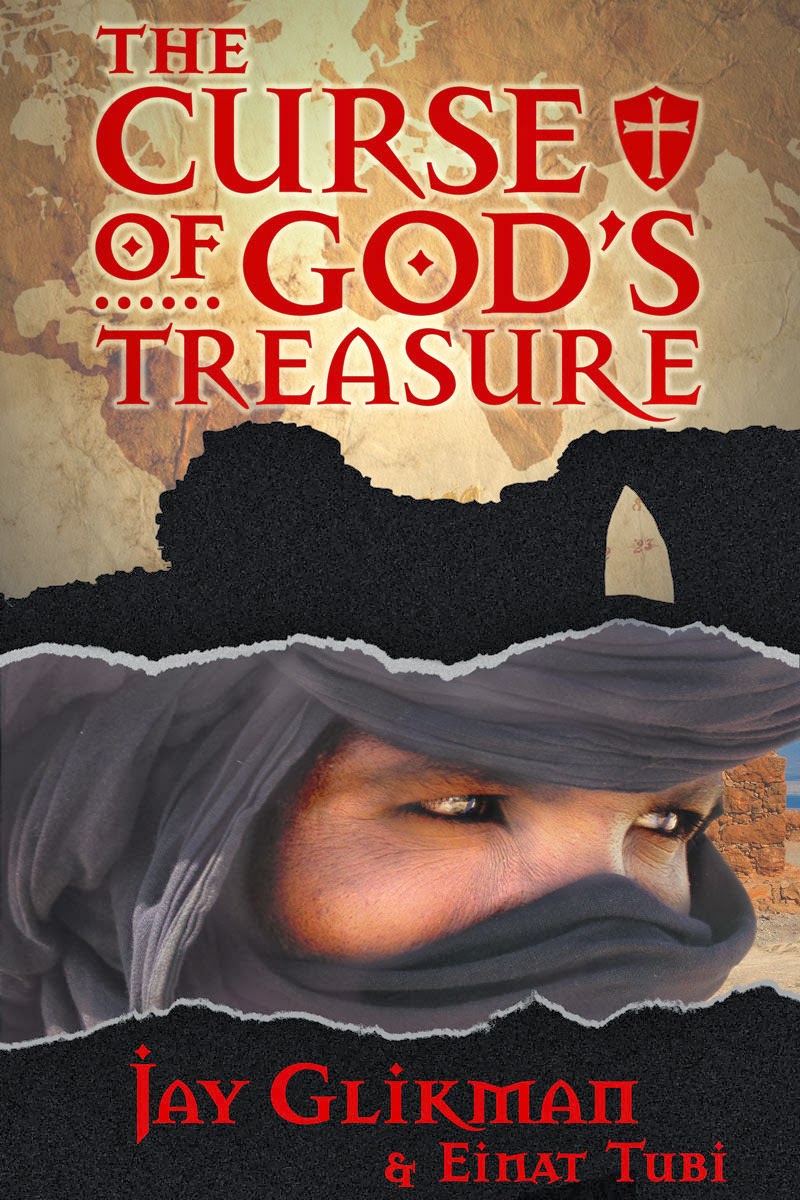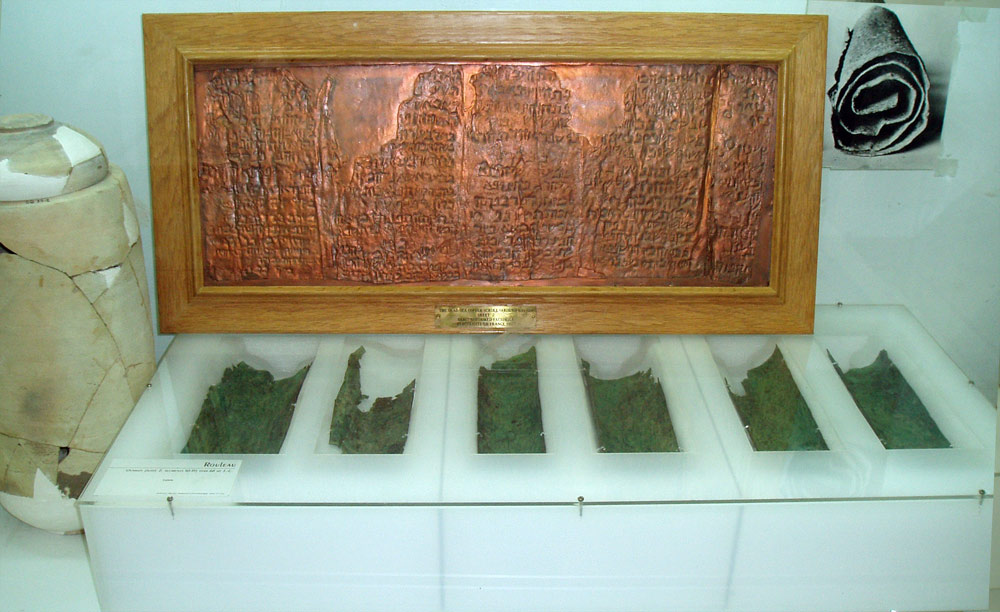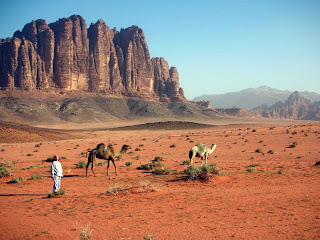“…May the wrath of God bring death and destruction upon you,
your household, your men and anyone who had, or shall ever have, a hand in this
sacrilege…” proclaimed the last high priest of the Second Holy Temple of
Jerusalem on the evening of Passover 70 AD, as he vehemently cursed Elazar Ben
Yair for robbing the Temple of 300 tons of gold and silver, as well as sacred
artifacts. Three years later on the mountain fortress of Masada, Elazar and his
Sicarii warriors resolved to take part in a mass suicide rather than fall into
the hands of the Roman Legion, giving rise to the phrase ‘NEVER AGAIN’, the
maxim upon which the new nation of Israel was born—but not before Elazar
succeeded in planting the seed to a 2000-year lineage of holy warriors whose
sole purpose was to protect the secret of God’s Treasure.
For 1100 years the Treasure lay dormant. But when the Knight Templars, another breed of holy warriors, came to possess it during the Third Crusade, the high priest’s curse on the treasure-seekers unleashed its tentacles of death, misery and destruction, bringing about the erasure of the Templars from of the pages of history.
August 2005: Israel’s Prime Minister decides to return the Gaza Strip to the Palestinian people. He plans to follow suit with the West Bank, also known as Judea and Samaria, the ancient burial place of God’s Treasure. The modern-day Sicarii warriors, as extreme and sinister as ever, are the present generation sentinels of God’s Treasure. Only now, they are also part of the Mossad and the General Security service, the pillars of the Israeli security establishment, as they rise up again to protect their secret and plot the demise of the PM, the man that in their eyes is a traitor to God and the people of Israel.
Professor Robert Young, a famous archeologist who spent most of his adult life trying to find God’s Treasure, suddenly finds himself a target of the secret assassination squad of the Israeli Mossad, one of the most capable intelligence services in the world. Aiding him in his adventures to uncover the treasure and evade the deadly Sicarii assassins are a Swiss Police inspector, who is tasked with determining whether it is the Mossad or rather some rogue agents instead that are responsible for murders on Swiss soil; an ex-SAS warrior sent by Jay Gross, the billionaire stepbrother of Professor Young, to help protect him from the Sicariis; and a beautiful Israeli Mossad agent, who starts out as a Sicarii then realigns herself with the professor after she falls in love with him.
This intriguing tale weaves in and out of ancient history to follow the Templars who believed that gaining possession of the treasure from the Sicarii was the source of all their misfortunes. To the world the Templars were dissolved in the early years of the 14th century; they were not. They reconstituted themselves in utter secrecy. When word of the search for the treasure reaches them in August 2005, they know they must find it before Young does and return it to the Sicarii, or again risk potential destruction. During Professor Young’s quest for the treasure and his attempts at escaping the deadly Sicarii, he stumbles upon the conspiracy to assassinate the Israeli PM. Unable to trust anyone within the Israeli security apparatus, the professor travels to New York to try and stop the assassination himself. It is there that the final electrifying confrontation takes place…
For 1100 years the Treasure lay dormant. But when the Knight Templars, another breed of holy warriors, came to possess it during the Third Crusade, the high priest’s curse on the treasure-seekers unleashed its tentacles of death, misery and destruction, bringing about the erasure of the Templars from of the pages of history.
August 2005: Israel’s Prime Minister decides to return the Gaza Strip to the Palestinian people. He plans to follow suit with the West Bank, also known as Judea and Samaria, the ancient burial place of God’s Treasure. The modern-day Sicarii warriors, as extreme and sinister as ever, are the present generation sentinels of God’s Treasure. Only now, they are also part of the Mossad and the General Security service, the pillars of the Israeli security establishment, as they rise up again to protect their secret and plot the demise of the PM, the man that in their eyes is a traitor to God and the people of Israel.
Professor Robert Young, a famous archeologist who spent most of his adult life trying to find God’s Treasure, suddenly finds himself a target of the secret assassination squad of the Israeli Mossad, one of the most capable intelligence services in the world. Aiding him in his adventures to uncover the treasure and evade the deadly Sicarii assassins are a Swiss Police inspector, who is tasked with determining whether it is the Mossad or rather some rogue agents instead that are responsible for murders on Swiss soil; an ex-SAS warrior sent by Jay Gross, the billionaire stepbrother of Professor Young, to help protect him from the Sicariis; and a beautiful Israeli Mossad agent, who starts out as a Sicarii then realigns herself with the professor after she falls in love with him.
This intriguing tale weaves in and out of ancient history to follow the Templars who believed that gaining possession of the treasure from the Sicarii was the source of all their misfortunes. To the world the Templars were dissolved in the early years of the 14th century; they were not. They reconstituted themselves in utter secrecy. When word of the search for the treasure reaches them in August 2005, they know they must find it before Young does and return it to the Sicarii, or again risk potential destruction. During Professor Young’s quest for the treasure and his attempts at escaping the deadly Sicarii, he stumbles upon the conspiracy to assassinate the Israeli PM. Unable to trust anyone within the Israeli security apparatus, the professor travels to New York to try and stop the assassination himself. It is there that the final electrifying confrontation takes place…




















